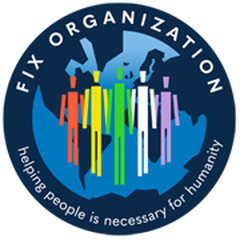Halabja
We are going to rally, reintroduce, sharing printed information, and approach people to remember and reintroduce Halabja in the United States of America.
HALABJA GENOCIDE
On 16 and 17 March 1988, Iraqi government airplanes, under the command of Saddam Hussein, dropped chemical weapons on the town of Halabja. Approximately 5,000 civilians, including women and children, were killed. The horrific tragedy of Halabja was part of the genocidal Anfal campaign against Kurdistan’s civilians, The Al-Anfal Campaign was a genocidal campaign against the Kurdish people (and many others) in Kurdish regions of Iraq led by the government of Saddam Hussein and headed by Ali Hassan al-Majid. This campain also targeted Shabaks and Yazidis, Assyrians, Turkoman people and Mandeans and many villages belonging to these ethnic groups were also destroyed, which included mass summary executions and disappearances and widespread use of chemical weapons. The campaign takes its name from Surat al-Anfal in the Qur'an, which was used as a code name by the former Iraqi Ba'athist administration for a series of attacks against the peshmerga rebels and the mostly Kurdish civilian population of rural Northern Iraq. The Anfal campaign also saw the destruction of some 2,000 villages and of the rural economy and infrastructure. An estimated 180,000 Iraqi Kurds were killed in the campaign between 1987-1989.
Saddam Hussein, President of Iraq for many decades, as the world's best known and most hated Arab leader. of one of the most brutal tyrants in recent history he was toppled by the United States military Saddam, had oppressed Iraq for more than 30 years, unleashing devastating regional wars and reducing his once promising, oilrich nation to a claustrophobic police state.
FOR MORE INFORMATION:
VIDEO: 1988: BBC’s John Simpson’s original report on chemical weapons attack on Halabja
This is his original report for the BBC One O’Clock News from March 1988 This video contains disturbing images.
VIDEO: BBC’s John Simpson returns to Halabja 25 years after attack
Twenty five years ago thousands of people died in the Kurdish town of Halabja when Saddam Hussein authorised an attack there with chemical gas. To this day parts of the town remain contaminated by lethal toxic gases. Kurdish authorities who govern the area are trying to establish that the attack was an act of genocide. This video contains disturbing images.
GENOCIDE IN IRAQ – The Anfal Campaign Against The Kurds. A Middle East Watch Report by Human Rights Watch
Study dated July 1993.
BBC RADIO: Decontaminating Halabja
The BBC’s foreign affairs editor John Simpson returns to Kurdistan nearly 25 years after the world’s worst-ever chemical weapons attack on civilians. A British forensics company now believes it can help by identifying the precise chemicals used and the European companies suspected of supplying them
Halabja Memorial App for iPhone and iPad.
A digital memorial created to keep the new generation aware of Halabja.
A Poisonous Affair: America, Iraq, and the Gassing of Halabja [Hardcover] by Joost R. Hiltermann
This book tells the story of the gassing of Halabja, and how Iraq amassed chemical weapons to target Iranian soldiers and Kurdish villagers as America looked the other way. Today, as the Middle East sinks further into turmoil, these policies are coming back to haunt the West.
Ghosts of Halabja: Saddam Hussein and the Kurdish Genocide (Praeger Security International) [Hardcover] by Michael J. Kelly
This book tells of the unspeakable atrocities visited by Saddam Hussein upon the Kurds of Iraq, together with the trials of Saddam by the Iraqi High Tribunal. However, this work is more than a litigation history. It is also an exploration of the motivations behind and the depths of organized evil in the context of a single, brutal despot.

